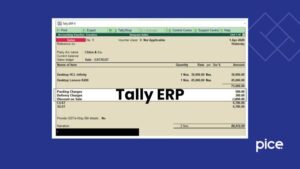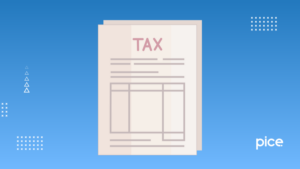Impact of GST on IT Sector
- 20 Jun 25
- 9 mins
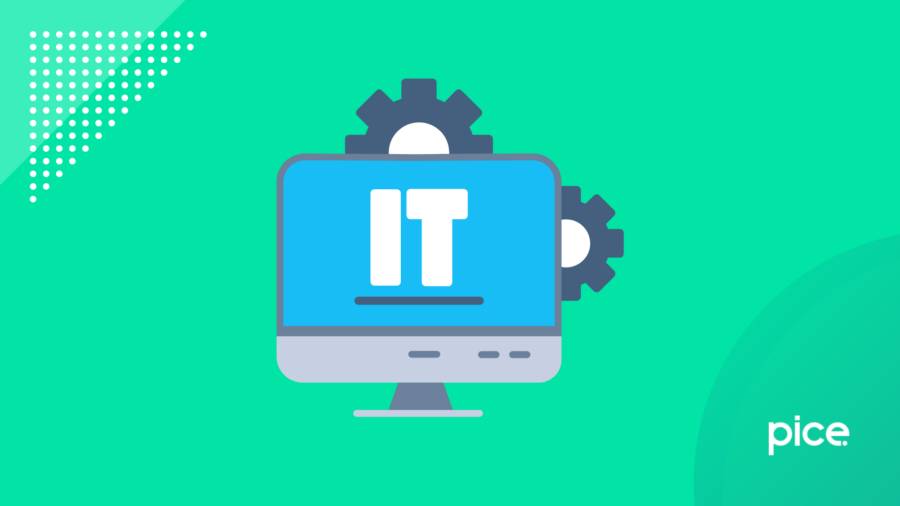
Impact of GST on IT Sector
Key Takeaways
- Software imports are taxed under the Reverse Charge Mechanism (RCM) with eligible Input Tax Credit (ITC), simplifying compliance for IT companies.
- A uniform 18% GST applies to most software services and ERP installations, ensuring consistency and easing financial planning for IT firms.
- Export of software services qualifies as zero-rated under GST, enabling exporters to claim ITC and boost international competitiveness.
- GST enables seamless Input Tax Credit (ITC) across goods and services, reducing costs and improving profitability in the IT sector.
- The unified GST regime has eliminated state-wise barriers, enhancing cash flow, market access, and operational efficiency for IT businesses.
The GST tax regime emerged as a pivotal development in the history of Indian taxation. GST has established its reach in various domains among which Information Technology (IT) stands as one.
As a fundamental economic sector of India, the IT sector encountered both hurdles and benefits from the implementation of the new tax structure. The purpose of GST included direct tax compliance, better compliance levels and a unified market.
This blog analyses the impact of GST on IT sector, starting from software import regulations through service tax rates and then looks at exporting services standards under GST while evaluating zero-rating opportunities for IT products.
GST Applicability to Software Import
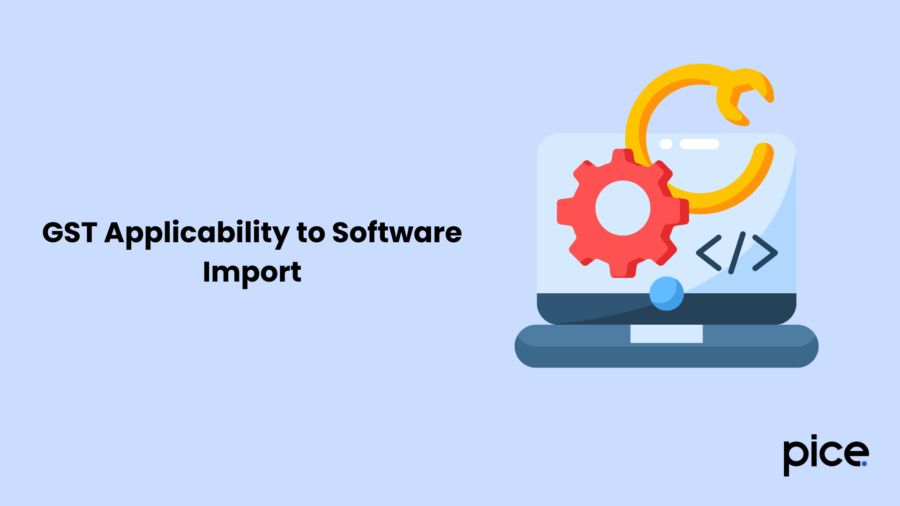
In the GST regime, computer software support, in particular the imported software, is treated as an import of service under HSN Code 997331. Imports are not required to have a Bill of Entry, unlike in goods. Rather, companies or entities importing software must remit the applicable Integrated Goods and Services Tax (IGST) under the Reverse Charge Mechanism (RCM) as laid out in Notification 10/2017-IT dated June 2017. This approach shifts the responsibility of tax payment to the service recipient.
Upon payment of the IGST, the imported software gets RCM status, which is indicated in the GST Return-1 (GSTR-1). Additionally, the importers can get the benefit of the Input Tax Credit (ITC) on the paid IGST, which is disclosed in the GST Return-3B (GSTR-3B).
It makes the process compliant while enabling businesses to set off the tax compliance burden. Thus, a credit-friendly and streamlined taxation framework can be facilitated in the software segment.
GST Rate on Software Services
In the Goods and Services Tax (GST) regime, the software segment in India is classified as service supplies. The activities of design, development, customisation, enhancement, implementation, and upgrade of IT software are considered services and are taxable under GST.
GST Rate for Software Services
According to existing rules, an 18% GST rate is levied uniformly on these software-related services. Where software is supplied in tangible form, including CDs or hard drives, it is classified as goods under the Customs Tariff Act with the HSN Code 8523-80-20, and a uniform 18% GST would be applicable.
In addition, IPR relating to software development is also recognised as a supply of service and would be taxed at 18%.
These upfront service taxes on different forms of software transactions bring consistency, compliance efficiency and remove the cascading of taxes. Moreover, the uniform rate structure makes the tax structure simpler for companies dealing with IT-related activities and facilitates improved planning, secretarial compliance and financial reporting.
GST Rate on Installing New ERP
In the Goods and Services Tax regime, the installation of new Enterprise Resource Planning (ERP) systems falls under the category of a service. Companies in the software industry need to complete five steps, which include examination followed by personalisation. Then, they must put it into practice while teaching employees new skills.
The GST law treats ERP installation services at a rate of 18% for taxation. Also, the GST bill applies to every invoice, no matter the duration or payment pattern of the service contract. Companies in the software industry can avail of Input Tax Credit on GST paid, provided they adhere to GST regulations.
GST Applicability to Export of Software Services
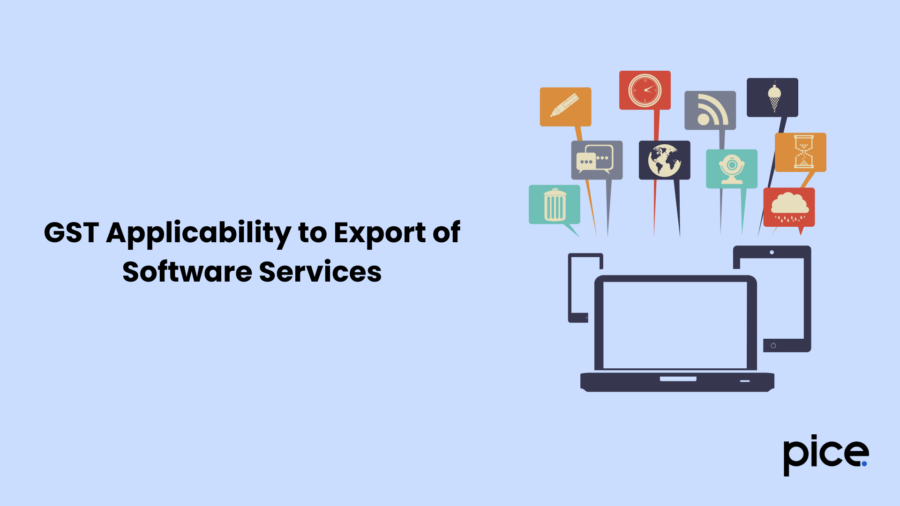
According to the Goods and Services Tax structure in India, the export of software services is classified as a zero-rated supply. This applies to exports to overseas customers and also supplies to Special Economic Zone (SEZ) units and developers.
To be zero-rated is to state that no GST is charged on such exports, but exporters can claim input tax credit (ITC) on goods and services utilised in the provision of these software services. Furthermore, this system makes the exported services tax-free while enabling exporters to recover input expenses.
Options for Zero-Rated IT Services and Exports Under GST
Two options are available to exporters to claim the advantage of zero-rated GST provisions.
1. Pay Integrated Tax and Claim Refund: Initially, they can pay the Integrated Goods and Services Tax (IGST) on exported services and get refunded after the export.
2. Bond and Claim Refund: The exporter can use a bond or Letter of Undertaking (LUT) as an alternative to paying IGST to enable them to claim refunds for aggregated ITC.
Companies in the software industry need to predict their anticipated tax liabilities through the GST calculator in India before their registration. Such provisions render the GST system export-oriented, especially for the IT industry, by ensuring competitiveness and promoting participation in global trade.
GST on Computer Parts
The following table shows the GST rates for different computer parts, which will give a clear idea of the impact of GST on India’s software segment:
| Sl. No. | Computer Part | GST Rate |
| 1 | Desktop PC | 18% |
| 2 | Laptop | 18% |
| 3 | RAM and Memory Chips | 18% |
| 4 | Optical Drives | 18% |
| 5 | Pen Drives | 18% |
| 6 | Hard Drives (Internal and External) | 18% |
| 7 | Monitors LED/LCD (greater than 32 inches) | 28% |
| 8 | Monitors LED/LCD (up to 32 inches) | 18% |
| 9 | Laptop Adapter | 28% |
Impact of GST on IT Sector
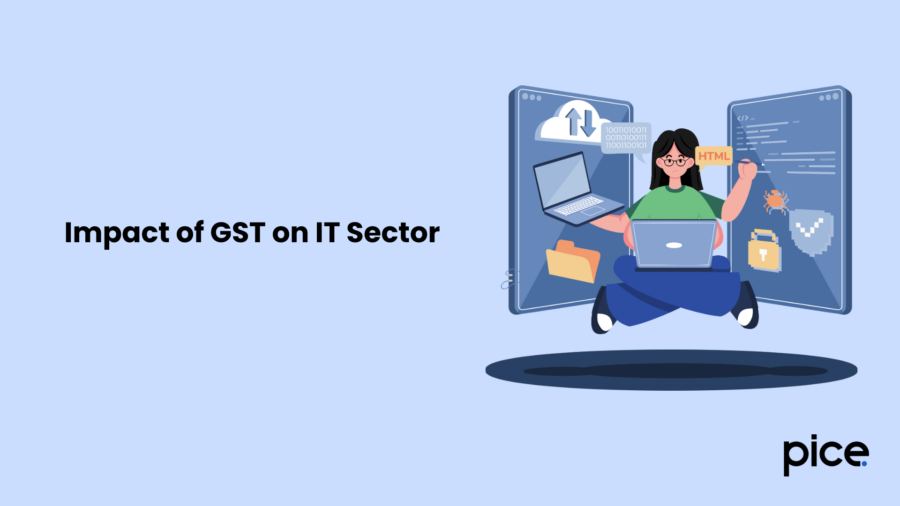
GST replaced a complex tax structure of multiple state and central taxes, excise duties, service tax, VATs and CSTs applicable in the previous tax regime. Here are the positive impacts of GST on the Indian IT sector:
- Seamless Input Tax Credit (ITC):
One of the most significant advantages of GST is the facility of input tax credit on goods and services across the supply chain. In the previous regime, IT traders could not claim service tax paid on annual maintenance contracts (AMCs), and service providers were not able to claim VAT on goods such as office stationery or hardware. With GST, both categories of entities are now able to optimise ITC on their respective inputs, leading to reduced production costs and better profitability.
- Lower Tax Burden
Earlier, the IT industry was liable to a variety of taxes at various stages of transactions, causing tax cascading and a high effective tax rate. For example, packaged software was subject to VAT and service tax, causing double taxation. GST has substituted these with a single rate of 18% for goods and services. This consolidation has made taxation easier and lowered the overall tax burden compared to the previous regime, imparting cost efficiency to IT companies.
- Better Cash Flow
GST has rationalised the tax payment system by merging several payments into one. This has improved working capital management within the software segment. In addition, IT exporters can export services without compliance obligations using the Letter of Undertaking (LUT). This prevents delays in refund claims and offers better liquidity in business systems.
- Better Market Access
The GST taxation system has evolved into one unified national market, obliterating trade barriers across states. IT companies were separately registered in each state where they operated and had different regulations. GST has delivered three substantial benefits to companies through simplified registration procedures, streamlined logistics and market expansion possibilities, particularly for start-ups and small and medium enterprises showing promising growth in software sales.
Conclusion
The impact of GST on IT sector in India has largely been positive, bringing greater transparency, operational efficiency and expanded business opportunities. This tax system has given rise to a unified tax system, consolidating multiple taxes and removing double taxation from many sectors like the Indian IT industry.
However, there are several disadvantages to introducing GST in India’s software segment. Therefore, it is essential to balance these cons to create opportunities to maintain the competitiveness and growth of the business process in India’s IT sector.
💡If you want to streamline your invoices and make payments via credit or debit card or UPI, consider using the PICE App. Explore the PICE App today and take your business to new heights.
 By
By 







